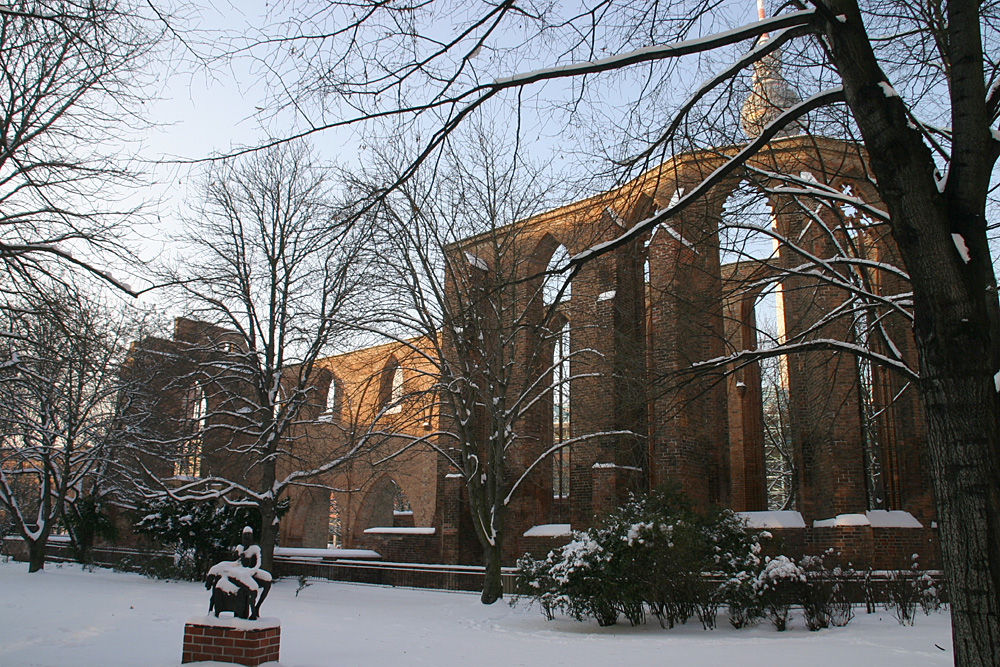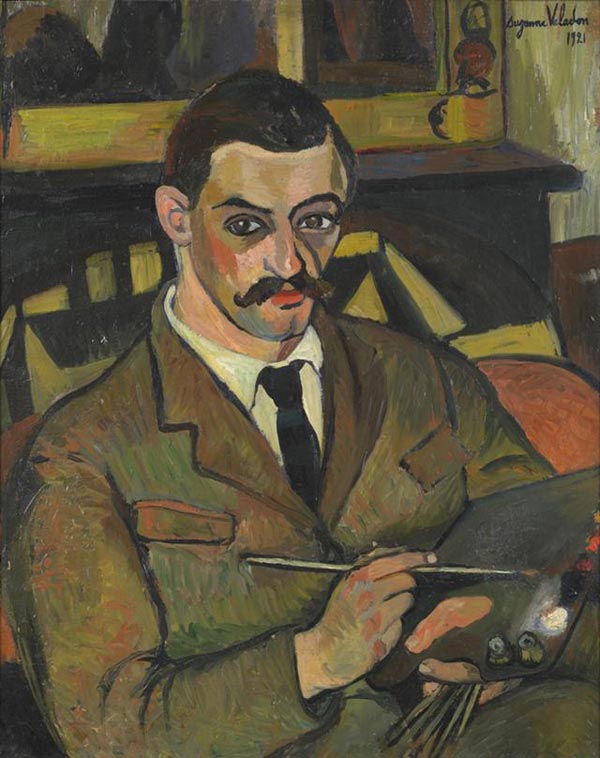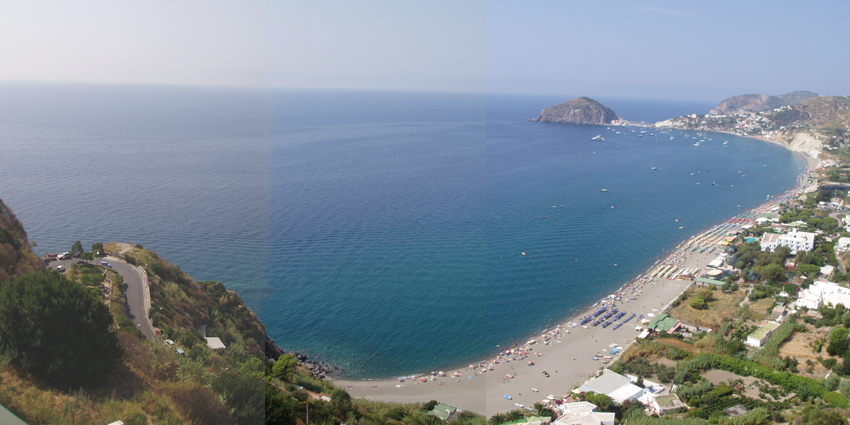|
Werner Heldt
Werner Heldt (1904–1954) was a German painter. Life Heldt was born in Berlin on 17 November 1904. The son of a pastor, he attended a grammar school, the ''Evangelisches Gymnasium zum Grauen Kloster, Gymnasium zum Grauen Kloster''. He studied art at the School of Arts and Crafts in 1923–4, and then at the Prussian Academy of Arts, Berlin Academy until 1930. His early work consisting, mostly of townscapes and scenes of night-life, shows the influence of his friend, the much older Heinrich Zille, with whom he used to visit the bars of suburban Berlin. By 1929, though, he had broken away from Zille's mildly satirical and rather antiquated vision of the city. In 1930 he visited Paris, where he met Maurice Utrillo, whose work he admired. Between 1929 and 1933 he underwent a course of psychoanalysis which prompted him to give up painting, instead making a series of drawings inspired by his dreams. He moved to Majorca in 1933, but following the outbreak of the Spanish Civil War he re ... [...More Info...] [...Related Items...] OR: [Wikipedia] [Google] [Baidu] |
Evangelisches Gymnasium Zum Grauen Kloster
The Evangelisches Gymnasium zum Grauen Kloster, located in suburban Schmargendorf, Berlin, is an independent school with a humanistic profile, known as one of the most prestigious schools in Germany. Founded by the Evangelical Church in West Berlin in 1949 as the Evangelisches Gymnasium, it continues the traditions of the ancient Berlinisches Gymnasium zum Grauen Kloster, the oldest Gymnasium in Berlin, which for hundreds of years was situated in former monastery buildings in the city's Mitte district, closed by the East Germans in 1958. In 1963 the Evangelisches Gymnasium of West Berlin adopted its traditions and added "zum Grauen Kloster" to its name. Curriculum The Evangelisches Gymnasium zum Grauen Kloster is one of the last schools in Berlin offering the entire range of classical education with Latin and Ancient Greek as compulsory subjects. The students learn foreign languages in this order: English (year 5), Latin (year 5), Ancient Greek (year 8), French (year 9 optional) ... [...More Info...] [...Related Items...] OR: [Wikipedia] [Google] [Baidu] |
Prussian Academy Of Arts
The Prussian Academy of Arts (German: ''Preußische Akademie der Künste'') was a state arts academy first established in Berlin, Brandenburg, in 1694/1696 by prince-elector Frederick III, in personal union Duke Frederick I of Prussia, and later king in Prussia. After the Accademia dei Lincei in Rome and the Académies Royales in Paris, the Prussian Academy of Art was the oldest institution of its kind in Europe, with a similar mission to other royal academies of that time, such as the Real Academia Española in Madrid, the Royal Society in London, or the Royal Swedish Academy of Fine Arts in Stockholm. The academy had a decisive influence on art and its development in the German-speaking world throughout its existence. For an extended period of time it was also the German artists' society and training organisation, whilst the Academy's Senate became Prussia's arts council as early as 1699. It dropped 'Prussian' from its name in 1945 and was finally disbanded in 1955 after ... [...More Info...] [...Related Items...] OR: [Wikipedia] [Google] [Baidu] |
Heinrich Zille
Rudolf Heinrich Zille (10 January 1858 – 9 August 1929) was a German illustrator, caricaturist, lithographer and photographer. Childhood and education Zille was born in Radeburg near Dresden, son of watchmaker Johann Traugott Zill (''Zille'' since 1854) and Ernestine Louise (born ''Heinitz'', daughter of a miner from the Ore Mountains). His father had originally been a blacksmith, however, being technically skilled, had gone on to become a watchmaker, goldsmith and inventor of tools. Zille spent his early years in Potschappel. His childhood was not without trouble. His father was incarcerated several times in debtors' prison and creditors harassed the family so much that the young Zille was often sent to live with his grandmother. In 1867 the family left town because of their debts and moved to Berlin. While still in school, the young Zille began to take drawing lessons. The teacher was supportive, and during a discussion of his future career aspirations, encouraged Zille to b ... [...More Info...] [...Related Items...] OR: [Wikipedia] [Google] [Baidu] |
Maurice Utrillo
Maurice Utrillo (), born Maurice Valadon; 26 December 1883 – 5 November 1955), was a French painter of the School of Paris who specialized in cityscapes. Born in the Montmartre quarter of Paris, France, Utrillo is one of the few famous painters of Montmartre who were born there. Biography Utrillo was the son of the artist Suzanne Valadon (born Marie-Clémentine Valadon), who was then an eighteen-year-old artist's model. She never revealed who was the father of her child; speculation exists that he was the offspring from a liaison with an equally young amateur painter named Boissy, or with the well-established painter Pierre-Cécile Puvis de Chavannes, or even with Renoir. (see below under ''Paternity''). In 1891 a Spanish artist, Miquel Utrillo, signed a legal document acknowledging paternity, although the question remains as to whether he was in fact the child's father. Valadon, who became a model after a fall from a trapeze ended her chosen career as a circus acrobat, fou ... [...More Info...] [...Related Items...] OR: [Wikipedia] [Google] [Baidu] |
Majorca
Mallorca, or Majorca, is the largest island in the Balearic Islands, which are part of Spain and located in the Mediterranean. The capital of the island, Palma, is also the capital of the autonomous community of the Balearic Islands. The Balearic Islands have been an autonomous region of Spain since 1983. There are two small islands off the coast of Mallorca: Cabrera (southeast of Palma) and Dragonera (west of Palma). The anthem of Mallorca is " La Balanguera". Like the other Balearic Islands of Menorca, Ibiza, and Formentera, the island is an extremely popular holiday destination, particularly for tourists from the Netherlands, Germany and the United Kingdom. The international airport, Palma de Mallorca Airport, is one of the busiest in Spain; it was used by 28 million passengers in 2017, with use increasing every year since 2012. Etymology The name derives from Classical Latin ''insula maior'', "larger island". Later, in Medieval Latin, this became ''Maiorca'', "the larg ... [...More Info...] [...Related Items...] OR: [Wikipedia] [Google] [Baidu] |
Spanish Civil War
The Spanish Civil War ( es, Guerra Civil Española)) or The Revolution ( es, La Revolución, link=no) among Nationalists, the Fourth Carlist War ( es, Cuarta Guerra Carlista, link=no) among Carlists, and The Rebellion ( es, La Rebelión, link=no) or The Uprising ( es, La Sublevación, link=no) among Republicans. was a civil war in Spain fought from 1936 to 1939 between the Republicans and the Nationalists. Republicans were loyal to the left-leaning Popular Front government of the Second Spanish Republic, and consisted of various socialist, communist, separatist, anarchist, and republican parties, some of which had opposed the government in the pre-war period. The opposing Nationalists were an alliance of Falangists, monarchists, conservatives, and traditionalists led by a military junta among whom General Francisco Franco quickly achieved a preponderant role. Due to the international political climate at the time, the war had many facets and was variously viewed as cla ... [...More Info...] [...Related Items...] OR: [Wikipedia] [Google] [Baidu] |
Werner Gilles
Werner Gilles (29 August 1894 – 23 June 1961) was a German artist. Gilles was born in Rheydt/Rheinland (today Mönchengladbach) He found his artistic calling while at the academies of Kassel and Weimar, studying under Lyonel Feininger of the Bauhaus school. He later moved after 1921 to Ischia, Italy. He moved to Düsseldorf in 1923, but between 1925 and 1930 he also worked in Berlin and Paris and lived in both during the period. The Nazi regime named him as a degenerate artist from the 1930s, and he had to stop working until after the war. From 1951 he moved to München in the winter, and Ischia in the summer. He died in Essen in 1961. Major works * 1933 to 1935 ''Arthur Rimbaud gewidmet'' * 1947 to 1949 ''Orpheus'', Akvarellsyklus * 1950 Akvareller til Tibetanischen Totenbuch (the Tibetan book of death) Exhibitions * 1948 24th Venice Biennale * 1950 25th Venezia biennial * 1955 documenta 1 in Kassel * 1958 29th Venezia biennial * 1959 documenta II in Kassel * 1961 Ku ... [...More Info...] [...Related Items...] OR: [Wikipedia] [Google] [Baidu] |
Hermann Blumenthal
Hermann Blumenthal (31 December 1905, Essen, Rhine Province – 17 August 1942, near Kljasticy, Russia) was a German sculptor. He was a participating artist in the documenta 1. Awards * 1929: Preis der Stadt Köln anlässlich einer Ausstellung des Deutschen Künstlerbundes * 1930: Großer Staatspreis of the Prussian Academy of Arts, verbunden mit einem Studienaufenthalt in der Villa Massimo, Rom * 1935: Stipendium des Reichserziehungsministeriums, Studienaufenthalt in Kassel * 1936: Rom-Stipendium des Reichserziehungsministeriums, Studienaufenthalt in der Villa Massimo * 1937: Villa-Romana-Stipendium, Studienaufenthalt in Florenz * 1939: Cornelius-Preis for Monumentalplastik der Stadt Düsseldorf * 1955: Posthum Teilnehmer der documenta 1, Kassel Works * 1929/39: Schreitender auf rechteckiger Platte, Bronze, H: 152 cm. Niedersächsischer Landtag, Hannover * 1930: Kniender (Spinne), Bronze, H: 103 cm. Staatliche Museen zu Berlin, Nationalgalerie * 1931/32: Kriechende ... [...More Info...] [...Related Items...] OR: [Wikipedia] [Google] [Baidu] |
Ostfriesland
East Frisia or East Friesland (german: Ostfriesland; ; stq, Aastfräislound) is a historic region in the northwest of Lower Saxony, Germany. It is primarily located on the western half of the East Frisian peninsula, to the east of West Frisia and to the west of Landkreis Friesland. Administratively, East Frisia consists of the districts Aurich, Leer and Wittmund and the city of Emden. It has a population of approximately 469,000 people and an area of . There is a chain of islands off the coast, called the East Frisian Islands (''Ostfriesische Inseln''). From west to east, these islands are: Borkum, Juist, Norderney, Baltrum, Langeoog and Spiekeroog. History The geographical region of East Frisia was inhabited in Paleolithic times by reindeer hunters of the Hamburg culture. Later there were Mesolithic and Neolithic settlements of various cultures. The period after prehistory can only be reconstructed from archaeological evidence. Access to the early history of East Fris ... [...More Info...] [...Related Items...] OR: [Wikipedia] [Google] [Baidu] |
Ischia
Ischia ( , , ) is a volcanic island in the Tyrrhenian Sea. It lies at the northern end of the Gulf of Naples, about from Naples. It is the largest of the Phlegrean Islands. Roughly trapezoidal in shape, it measures approximately east to west and north to south and has about of coastline and a surface area of . It is almost entirely mountainous; the highest peak is Mount Epomeo, at . The island is very densely populated, with 62,000 residents (more than 1,300 inhabitants per square km). Ischia is also well known for its thermal water and thermal gardens used since ancient times. Its volcanic nature makes Ischia one of the largest spas in Europe. Ischia's thermal waters are alkaline. Already the first Euboic settlers (8th century BC), as evidenced by the numerous archaeological finds found in the site of Pithecusa and preserved in thArchaeological Museum of Villa Arbustoin Lacco Ameno, appreciated and used the waters of the island's thermal springs. The Greeks, in fact, used ... [...More Info...] [...Related Items...] OR: [Wikipedia] [Google] [Baidu] |





